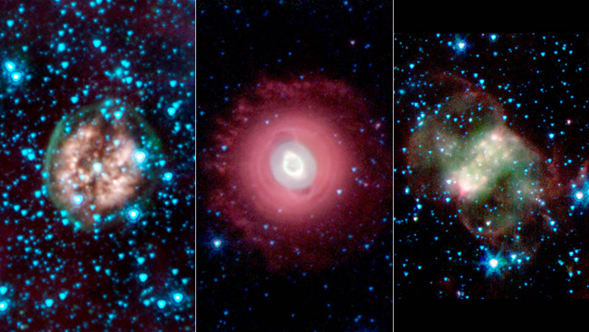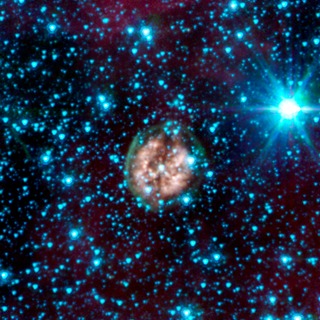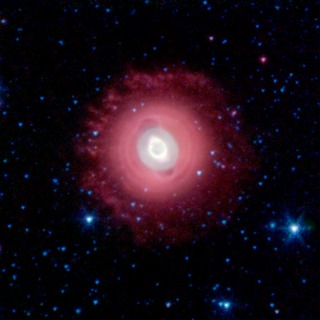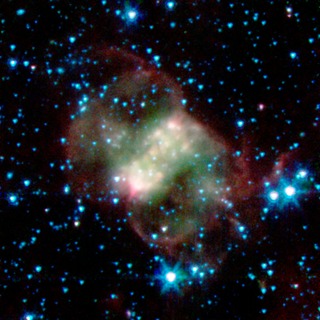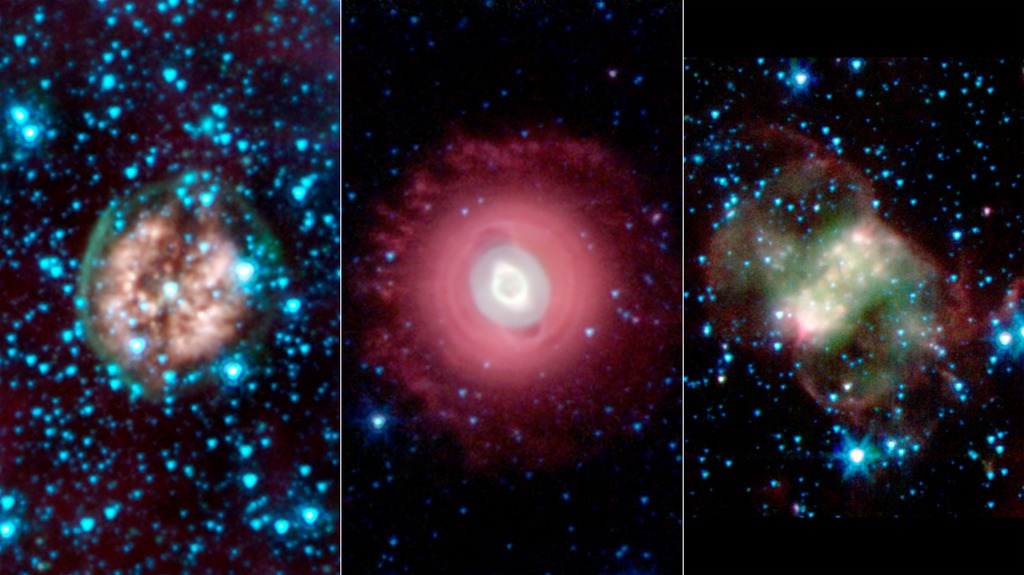
Credit: NASA/JPL-Caltech/J. Hora (Harvard-Smithsonian CfA)
Observation • October 28th, 2013 • sig13-012
sig13-012
This trio of ghostly images from NASA's Spitzer Space Telescope shows the disembodied remains of dying stars called planetary nebulas. Planetary nebulas are a late stage in a sun-like star's life, when its outer layers have sloughed off and are lit up by ultraviolet light from the central star. They come in a variety of shapes, as indicated by these three spooky structures.
In all of the images, infrared light at wavelengths of 3.6 microns is rendered in blue, 4.5 microns in green, and 8.0 microns in red.
Exposed Cranium Nebula (left)
The brain-like orb called PMR 1 has been nicknamed the "Exposed Cranium" nebula by Spitzer scientists. This planetary nebula, located roughly 5,000 light-years away in the Vela constellation, is host to a hot, massive dying star that is rapidly disintegrating, losing its mass. The nebula's insides, which appear mushy and red in this view, are made up primarily of ionized gas, while the outer green shell is cooler, consisting of glowing hydrogen molecules.
Ghost of Jupiter Nebula (middle)
The Ghost of Jupiter, also known as NGC 3242, is located roughly 1,400 light-years away in the constellation Hydra. Spitzer's infrared view shows off the cooler outer halo of the dying star, colored here in red. Also evident are concentric rings around the object, the result of material being periodically tossed out in the star's final death throes.
Little Dumbbell Nebula (right)
This planetary nebula, known as NGC 650 or the Little Dumbbell, is about 2,500 light-years from Earth in the Perseus constellation. Unlike the other spherical nebulas, it has a bipolar or butterfly shape due to a "waist," or disk, of thick material, running from lower left to upper right. Fast winds blow material away from the star, above and below this dusty disk. The ghoulish green and red clouds are from glowing hydrogen molecules, with the green area being hotter than the red.
About the Object
- Name
- PMR1 • PN G272.8+01.0 • Exposed Cranium Nebula • Ghost of Jupiter • NGC 3242 • Little Dumbbell Nebula • Messier 76 • M76 • NGC 650
- Type
- Nebula > Type > Planetary
- Distance
- 5,000 Light Years
Color Mapping
| Band | Wavelength | Telescope |
| Infrared | 3.6 µm | Spitzer IRAC |
| Infrared | 4.5 µm | Spitzer IRAC |
| Infrared | 8.0 µm | Spitzer MIPS |
